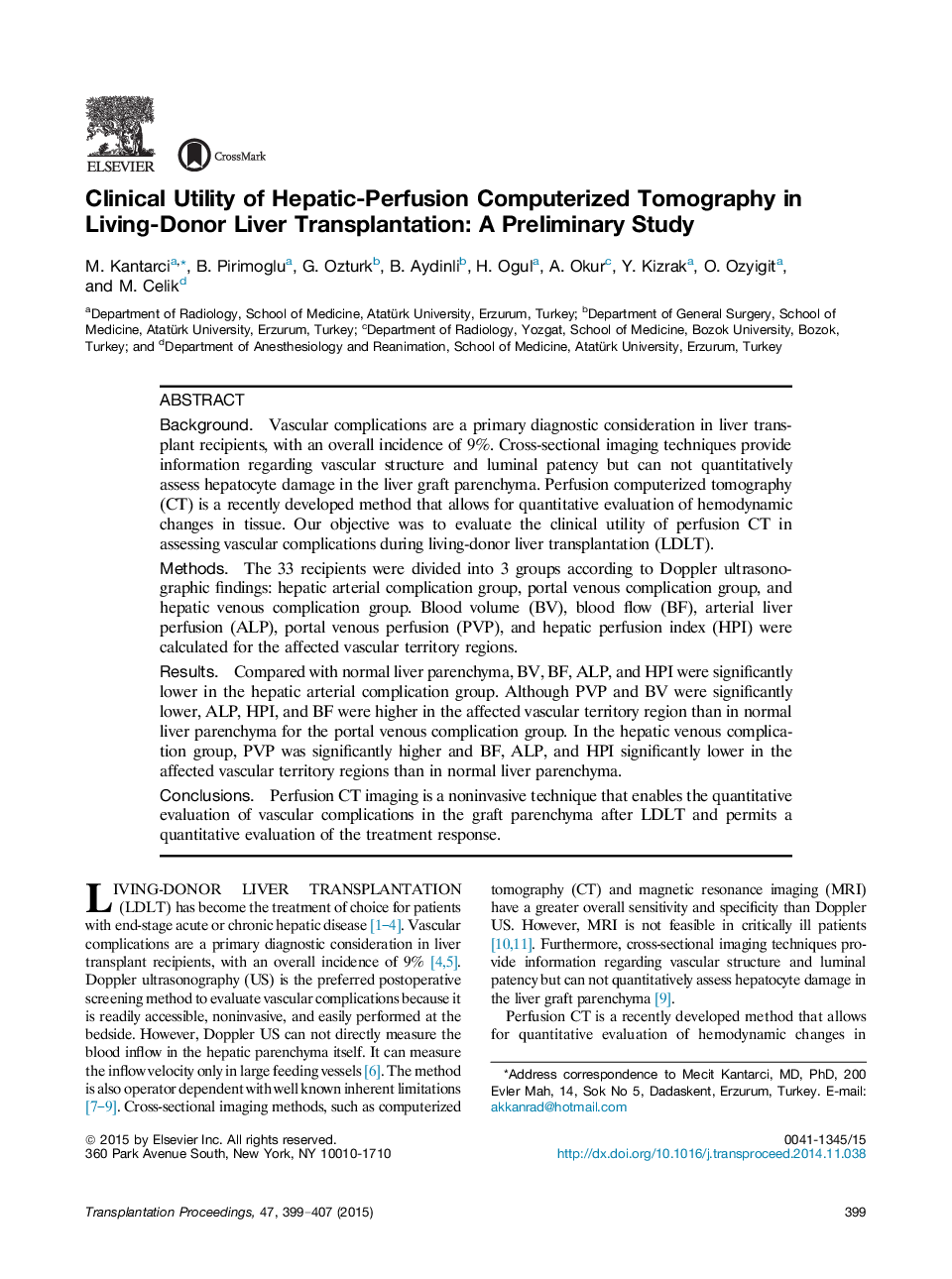| کد مقاله | کد نشریه | سال انتشار | مقاله انگلیسی | نسخه تمام متن |
|---|---|---|---|---|
| 4257617 | 1284547 | 2015 | 9 صفحه PDF | دانلود رایگان |
• We evaluated patients who had received transplants in our hospital or outside institutions and were referred to the diagnostic radiology department for further evaluation of vascular complications by means of CT perfusion.
• We aimed to evaluate the diagnostic and prognostic value of CT perfusion in detecting vascular complications in liver grafts.
• CT perfusion imaging enabled an analysis of vascular regions, a functional assessment of the liver graft parenchyma, and a quantitative evaluation of the areas in the liver parenchyma affected by vascular complications.
• Unlike other imaging techniques, such as Doppler ultrasound and CT angiography, this method may have the potential role to predict treatment responses and liver graft life expectancy.
BackgroundVascular complications are a primary diagnostic consideration in liver transplant recipients, with an overall incidence of 9%. Cross-sectional imaging techniques provide information regarding vascular structure and luminal patency but can not quantitatively assess hepatocyte damage in the liver graft parenchyma. Perfusion computerized tomography (CT) is a recently developed method that allows for quantitative evaluation of hemodynamic changes in tissue. Our objective was to evaluate the clinical utility of perfusion CT in assessing vascular complications during living-donor liver transplantation (LDLT).MethodsThe 33 recipients were divided into 3 groups according to Doppler ultrasonographic findings: hepatic arterial complication group, portal venous complication group, and hepatic venous complication group. Blood volume (BV), blood flow (BF), arterial liver perfusion (ALP), portal venous perfusion (PVP), and hepatic perfusion index (HPI) were calculated for the affected vascular territory regions.ResultsCompared with normal liver parenchyma, BV, BF, ALP, and HPI were significantly lower in the hepatic arterial complication group. Although PVP and BV were significantly lower, ALP, HPI, and BF were higher in the affected vascular territory region than in normal liver parenchyma for the portal venous complication group. In the hepatic venous complication group, PVP was significantly higher and BF, ALP, and HPI significantly lower in the affected vascular territory regions than in normal liver parenchyma.ConclusionsPerfusion CT imaging is a noninvasive technique that enables the quantitative evaluation of vascular complications in the graft parenchyma after LDLT and permits a quantitative evaluation of the treatment response.
Journal: Transplantation Proceedings - Volume 47, Issue 2, March 2015, Pages 399–407
